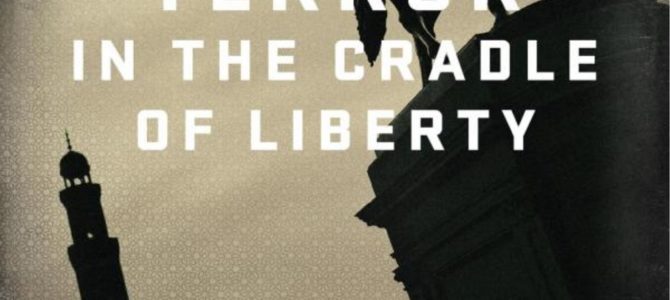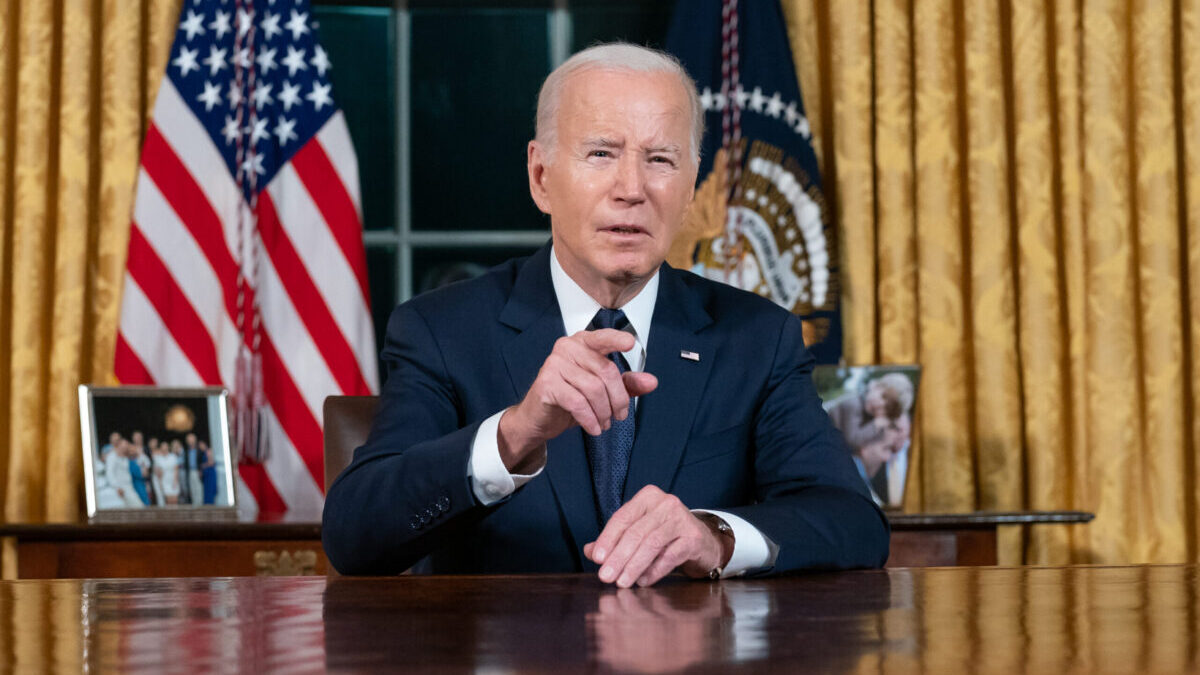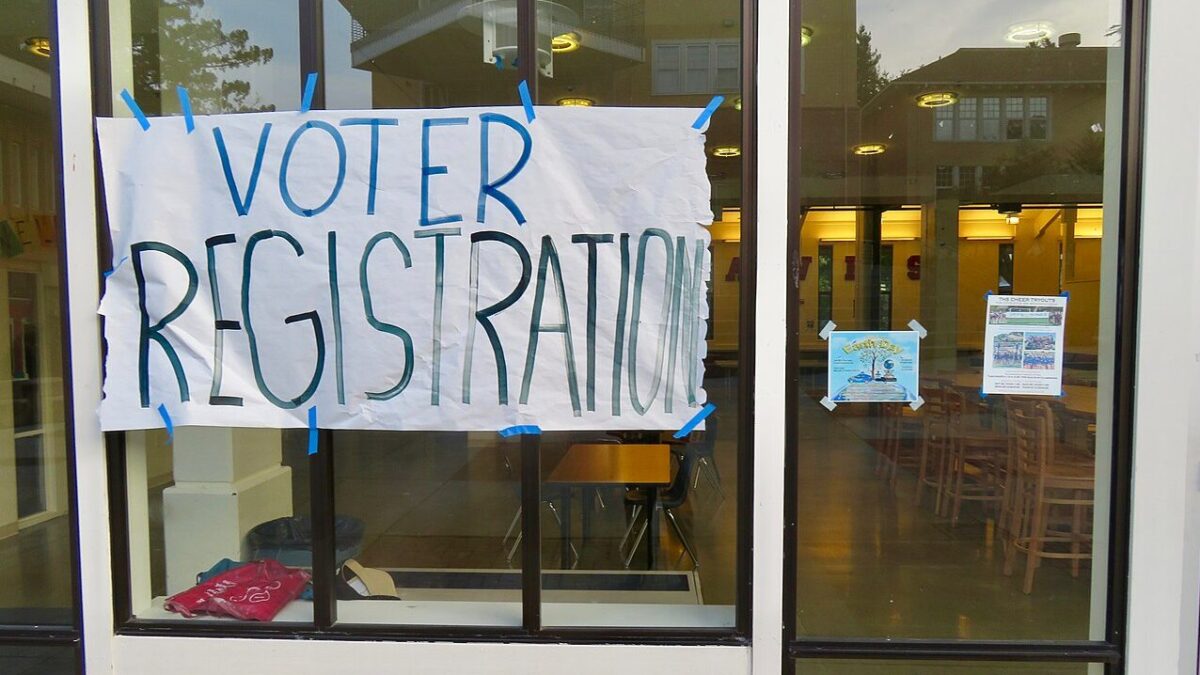
A conspiracy conceals its bad behavior behind allegations its opponents are crazed “conspiracy theorists.” Reporters expend column inches denouncing and denying facts revealed by the very investigative reporting that they refused to do themselves. Respected establishment organizations side against their own base rather than address the growing concerns of those who made them influential.
Given the theme, you will be forgiven if you assume this is the story of the post-2016 political and media environment. But Terror in the Cradle of Liberty by Ilya I. Feoktistov has nothing to do with the current climate of Washington D.C in the age of President Donald Trump.
Instead, Feoktistov is the executive director of the Americans for Peace and Tolerance (APT), a Boston area nonprofit organization founded to investigate threats to civil society, a group founded by his mentor Charles Jacobs, a long-time Jewish activist who played a central role in efforts to combat slavery in Africa, particularly Sudan. Jacobs eventually played a leading role in the David Project, a Boston-area Jewish group fighting anti-Semitism and anti-Zionism.
The story of how they came to be involved in investigating Islamic extremist cells in Boston, as told in Terror in the Cradle of Liberty: How Boston Became a Center for Islamic Extremism is really three stories in one.
Firstly, it is the story of Jacobs, Feoktistov, and a small coterie of Boston activists who, while chasing a seemingly pedestrian story of a “sweetheart land deal” between the Boston government and a local city mosque, The Islamic Society of Boston, stumbled into a radical network that would foster more than one dozen terrorists in the past two decades, including the notorious Boston Marathon bombers, Dzhokhar and Tamerlan Tsarnaev.
Secondly, it is the story of the Boston media which ignored them, then later smeared them as conspiracy theorists and kooks even while Boston became known as a hub for Islamic terrorism.
Finally, it is the story of the capitulation of the leadership of the Boston Jewish community, which not only declined to listen to warnings about their interfaith partners at the Islamic Society of Boston, but instead targeted Jacobs and his team for derision and exclusion for daring to raise questions.
An Unethical Land Scam
To sketch the background of the story as broadly as possible, in 2002 a Boston philanthropist named Bill Sapers learned that the city government’s Boston Redevelopment Authority had undertaken to sell a piece of property in the depressed Roxbury neighborhood to the Islamic Society of Boston Mosque at a substantially reduced price. After unsuccessfully attempting to find out the logic behind the sweetheart deal, Sapers persuaded a freelance reporter named Tamar Morad to investigate. Morad presented her findings in an article to the Boston Globe, but the Globe refused to publish the story.
A year later, a Boston Herald piece would finally reveal many of the same facts Morad had uncovered in the story the Boston Globe had squashed. These included that one of the members of the Boston Redevelopment Authority that had approved the land sale, Ali Salaam, had close ties to the mosque. But perhaps more shockingly, the Herald revealed that the mosque leadership was chock full of those with extremist ties.
It was founded by one Abdurrahman Alamoudi, an influential Muslim leader who was under indictment (at the time; now convicted) on terrorism-related charges and had made public statements of support for terrorist groups. He would later be described by the Treasury Department as a leading al-Qaeda fundraiser. Other extremist connections for the mosque included ISB Trustees Yusuf Al-Qaradawi, better known as the spiritual mentor of the Muslim Brotherhood and for his authorization of Hamas suicide bombings, and Osama Kandil, who would be identified as a leading Muslim Brotherhood figure.
The Boston Herald also identified the man responsible for raising money for the mosque’s land purchase, Treasurer Walid Fitaihi, as the publisher of virulently anti-Jewish screeds throughout the Arab press. One example, quoted by Feoktistov in the book, notes that the Jews
…have perpetrated the worst of evils and they have brought the worst corruption to the earth… They have incurred Allah’s wrath and they have been afflicted with misery. That is because they continuously reject the Signs of Allah and were after slaying the Prophets… and this resulted from their disobedience and their habit of transgression.
While Fitaihi’s sentiments were nothing out of the ordinary for much of the Middle East, that they came from a fixture of Boston’s interfaith circles and a frequent participant in the Islamic Society of Boston’s outreach efforts to Jewish community leaders made him a centerpiece of the controversy. It was this rank antisemitism, and the risk that it was being spread to Boston’s Muslim youth, that motivated Jacobs to join the fight.
Jacobs and his team soon formed Citizens for Peace and Tolerance (which would eventually become APT), a group of Jewish, Christian, atheist, and even Muslim leaders concerned about the ISB’s extremist connections and its unethical land scam.
The Boston Herald’s continuing exposure of ISB kicked off a wave of public outrage. The BRA/ISB land deal now faced a legal challenge on First Amendment grounds, and elected officials were demanding an investigation. Everything seemed to be going swimmingly. A media investigation led to public outcry resulting in action by legislative officials and judicial review. It all looked like the very picture of American democracy, with its many built-in protections against corruption.
To quote former DHS Secretary Janet Napolitano about another terror-related matter, “the system worked.” But it didn’t work for long.
Sued Into Silence
By October 2004, the Boston Globe, those same brave media firefighters who attempted to smother the ISB corruption story in its crib, did a softball interview with ISB and wrote an editorial declaring that, whatever its roots, ISB was a “moderating mosque.” Then in May 2005, ISB hit back hard, launching lawsuits against the Boston Herald for defamation.
Those lawsuits would be expanded to include Fox 25 News, and eventually, Bill Sapers, Citizens for Peace and Tolerance, the David Project, as well as long-time investigator of American jihadist networks Steve Emerson and his Investigative Project on Terrorism (IPT), which had stepped in to assist.
The goal of the lawsuit was simple. Shut down any critical reporting of ISB. Feoktistov demonstrates this with a quote from Nabeel Khudairi, a leader of the Islamic Council of New England, which was an Islamist controlled umbrella group over New England mosques.
“If FOX is being sued for this story,” Khudairi wrote, “it stands to reason that they will be prevented from reporting on the story further while the case is in court.”
It worked. Both Fox 25 and the Boston Herald retreated in disarray as their lawyers instructed them to cease reporting on the Islamic Society until the case was resolved.
I’ve seen this dynamic at work in other places. During the infamous Holy Land Foundation Trial for example, the local Dallas Morning News was the leading provider of coverage of how the country’s largest Islamic charity had been exposed by the federal government as a terrorist fundraising operation.
But after a lawsuit, the Morning News was so neutered it routinely turned over its editorial page to officials from the very groups it once critically reported on, and who had sued them into silence. As Todd Bensman, who covered parts of the Holy Land Foundation story for the Morning News notes:
It was a very effective lawsuit in terms of controlling coverage and clamping the coverage down. The paper just really rolled over, very timid and frightened about the whole thing. They just wanted it to go away.
Nor has this occurred just in what has derisively been called “the establishment media.” Even conservative online publications have increasingly balked at covering stories that involve domestic Islamist groups, who are notoriously litigious. Some have declined to publish articles because they have been threatened with suits, while others have pulled articles from their sites at the first sign of a lawyer’s letter despite ample sourcing for every relevant fact.
Frankly, who can blame them? Given the financial pressures on today’s media, who has the time or inclination to fight a malicious prosecution whose only goal is cost you money and drag you though the mud? While many were unaware, this silencing strategy received one of its first real test runs in Boston during the ISB controversy.
The second hammer blow came as elements of the Jewish community not only refused to back up their colleagues at the David Project and the Citizens for Peace and Tolerance, but actively took sides against them. Feoktistov summarizes the betrayal with a quote from Steven Cohen of Citizens for Peace and Tolerance:
The fact that the suit was brought was troublesome, the way the courts dealt with it was troublesome, the way the press dealt with it was upsetting, but most upsetting of all was the way the Jewish community of Boston reacted to this lawsuit – and in particular the leadership of the Jewish community.
Instead of looking at the data, community leaders retreated behind interfaith buzzwords and their history of “relationships” with ISB’s leaders. Feoktistov describes one rabbi CPT spoke to as claiming that to even look at APT’s evidence of ISB’s bad behavior was itself ipso facto bigotry.
Feoktistov dedicates much of the book to, at times almost obsessively, detailing the refusals of various Boston Jewish leaders to listen to warnings as more and more examples of ISB’s extremism came to light. This is also where, somewhat understandably, Feoktistov drops the measured tone with which he relates the ties of various New England Islamist leaders to terror and extremism. There is a certain irony in being able to calmly relate a Boston imam’s ties to the deadly terror group Laskar-e-Taiba but being unable to hide one’s disgust for the failures of those who were supposed to be on your side.
While Feoktistov’s outrage comes through loud in clear, Jacobs perhaps cuts deeper in summing up the struggles with Boston Jewish leadership in the ISB fight. In his description of one Jewish philanthropic leader Feoktistov quotes Jacobs delivering ultimate left-handed compliment, “[He] was a fine peacetime leader…”
Perhaps one response to what happened here is best expressed by paraphrasing “The Godfather’s” Sonny Corleone, “If only we had a wartime consigliere, we wouldn’t be in this shape.” This sentiment of frustration will certainly resonate with Americans in a wide variety of political battles waged in the past decades, and not just ones over Islamic extremism. Those who have grown powerful and successful claiming to represent their constituencies never quite seemed willing to go to the mattresses when it mattered the most.
Local Crime
Just when things seemed perhaps at their darkest in the ISB lawsuit, there was an unexpected change of fortunes. The suit entered the discovery phase, which the mosque’s leadership apparently hadn’t expected. Now they were on the hook to produce boxes and boxes of records, emails, and other correspondence regarding their organization, leadership, and especially banking information and fundraising methods.
After the risk of sanctions for failure to disclose and for attempting to delete and hide emails, the ISB leadership eventually was forced to turn over a treasure trove of documentation to Jacobs and his team. The mosque eventually agreed to dismiss the case, in part to stop the bleeding of compromising materials.
Terror in the Cradle of Liberty’s narrative breaks down a bit in the second half of the book, as Feoktistov takes the opportunity to share vignettes shaped around the data acquired in the ISB lawsuit and what it revealed about Boston’s Islamist underbelly.
By way of full disclosure, the community of qualified researchers and activists focused on the Islamist networks in the United States can probably be counted on one hand. I have known Feoktistov professionally for most of our careers, as we came up through the ranks in this very niche area at roughly the same time. We have traded sources and data on shared research targets. I have always found him serious and competent as an open-source researcher, with a knack for finding interesting connections and uncovering documents.
I have also personally researched or written about many of the incidents he recounts in his book. Thus while as a reader I found the semi-autobiographical style of Terror in the Cradle of Liberty where Feoktistov relates events he personally witnessed to be entertaining, I found myself frustrated that at least the review copy of the book lacked any kind of footnotes or endnotes which, as a researcher, would have been invaluable.
This section of the book is also likely to be very challenging for someone who has not been a student of domestic Islamist activities in the United States. While Feoktistov does an admirable job relating various landmark events such as the previously mentioned Holy Land Foundation trial – which led to the publication by the U.S. government of tranches of documents from the U.S. Muslim Brotherhood’s archive – substantial digressions are required to explain the intricacies of this network to the uninitiated and how it factored into the expose of the Boston network.
Some charts would have been helpful to readers in keeping track of the reappearance of multiple and often confusing names. Useful works for those seeking to get up to speed before reading Terror in the Cradle of Liberty include former prosecutor Andrew McCarthy’s The Grand Jihad, or for the visually inclined Steve Emerson’s documentary video, The Grand Deception.
While his summaries of these larger cases are completely adequate, Feoktistov’s writing is best when he stays close to home and focuses on the network in Boston, which is no surprise given his firsthand access to the ISB documents that came out of the lawsuit. For this reason the section, “Battle for the Soul of a Mosque,” on how the terrorist-supporters seized control of the previously moderate Islamic Council of New England, is especially worth reading closely, as are the sections on Boston’s ruling jihadi queen bee, Aafia Siddiqui, and on the early development of the Tsarnaev brothers.
Of particular interest is Feoktistov’s treatment of the murders of three Jewish men, Brendan Mess, Erik Weissman, and Rafi Teken. How many Americans are aware that it is now widely believed by law enforcement that before he took his place as a Boston Marathon bomber, Tamerlan Tsarnaev killed and nearly beheaded three Jewish men, before sprinkling money and drugs over their bodies? What could have been prevented if Tsarnaev had been stopped earlier, on what appeared at first glance as a mere “local crime story?”
Moderate Muslims
Another salient point in Feoktistov’s book, and which should play a major role in his concluding exhortation for Americans to examine and repel the extremist networks in their own hometowns, is his focus on how moderate Muslims affected the ISB story. Feoktistov emphasizes the key role played by Sheikh Ahmed Subhy Mansour, a reformist theologian and former Al-Azhar University professor, and he acknowledges “many thanks and great honor” due “Rashid,” an informant who provided information about the radical mosque for APT’s investigations.
Feoktistov’s willingness to do this is important. As someone whose day job involves working with local activists concerned about Islamic extremism in their communities, I’ve realized a segment of the population finds it increasingly difficult to accept that there are any such thing as “moderate” or “reformer” Muslims worth working with.
Partially this is understandable, given how interfaith groups like those Feoktistov excoriates in Terror in the Cradle of Liberty have repeatedly chosen to award the title “moderate” to those who are anything but. To be effective, and to truly counter radicals like those who took over the Islamic Council of New England, requires being able to work with those within the American Muslim community, and with people of good will of all stripes, to oppose moves by extremists. APT’s experience in Boston demonstrates that, and if their experience is to be replicated in other hometowns across America, it will be necessary for people to learn from the example APT set.
It is perhaps unlikely that Terror in the Cradle of Liberty will make much of a splash, even in the relatively small corner of the conservative media that remains open or interested in matters of Islamic extremism. It’s unlikely to play the role Muslim Mafia (by investigative journalist Paul Sperry and researcher David Gaubatz) did when it first came out, in part because of the championing by then-Rep. Sue Myrick (R-NC). In part, this is because the country seems to have moved on.
In the age of Trump there is likely a limited audience for hearing that America’s problem with domestic Islamic extremism has not been defeated, despite the successful destruction of the Islamic State. This is even more unfortunate, because what Terror in the Cradle of Liberty has to say about the cowardice of our press and elected and community leaders is perhaps even more relevant than what it has to say about terror in the city of Boston.









